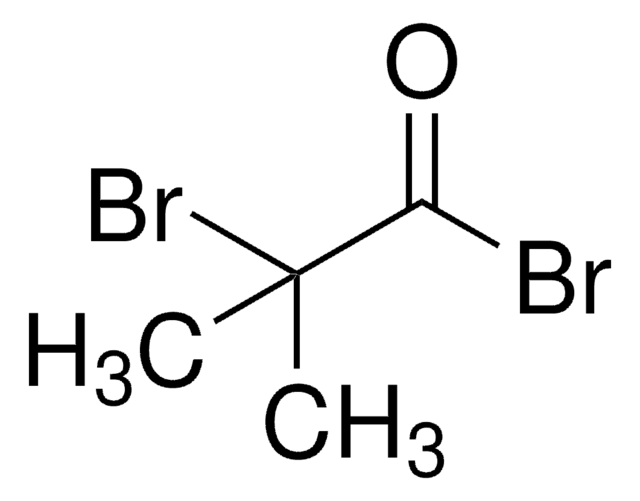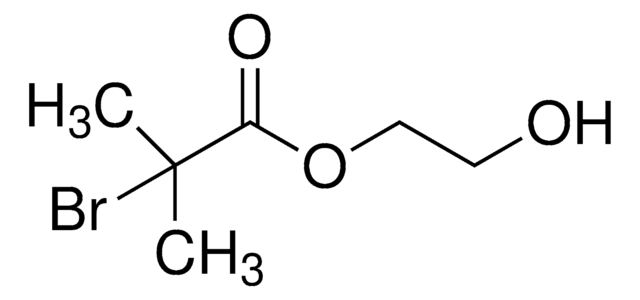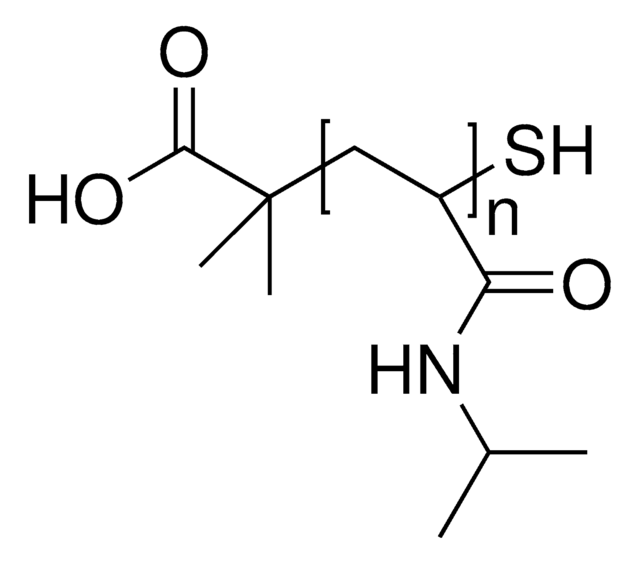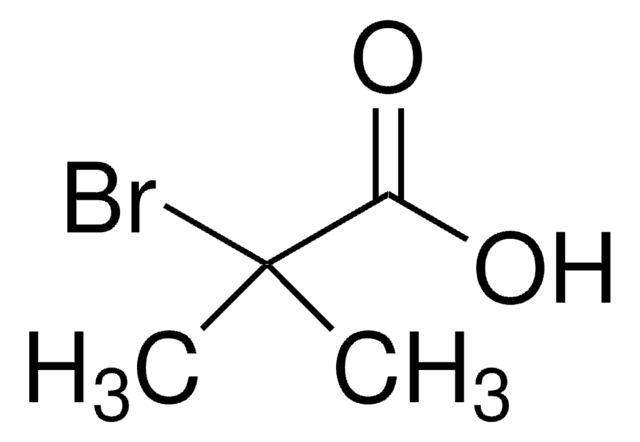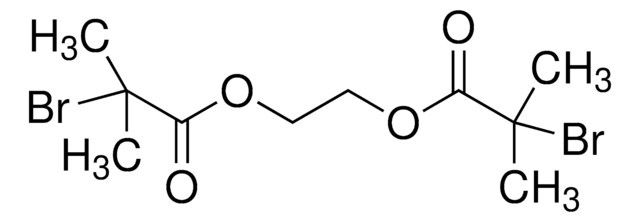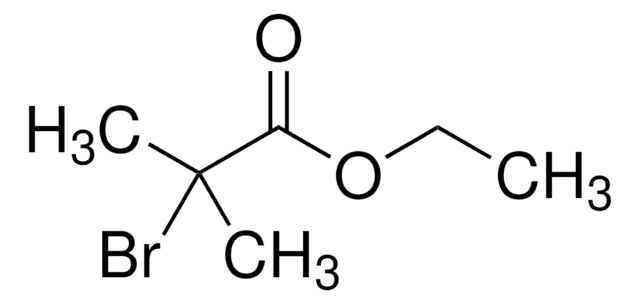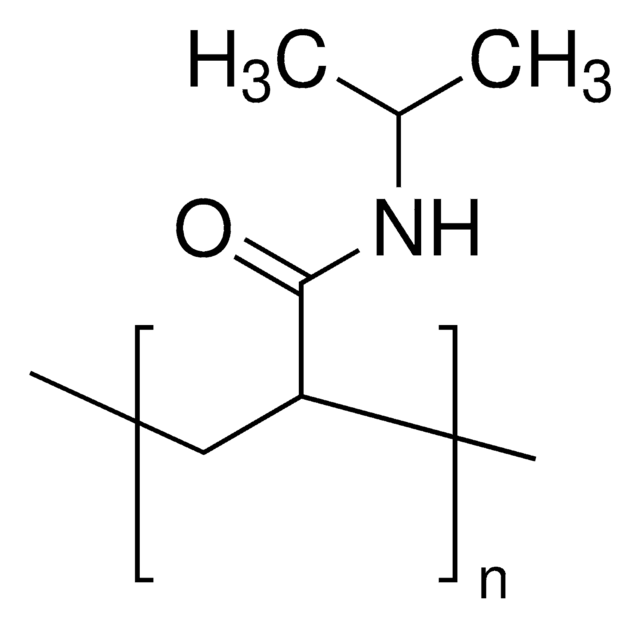733350
Bis[2-(2-bromoisobutyryloxy)undecyl] disulfide
97%
Synonym(s):
11,11′-Dithiobis[1-(2-bromo-2-methylpropionyloxy)undecane], DTBU
About This Item
Recommended Products
Quality Level
Assay
97%
form
solid
solubility
1.500 at 20 °C
density
1.177 g/mL at 25 °C
SMILES string
CC(C)(Br)C(=O)OCCCCCCCCCCCSSCCCCCCCCCCCOC(=O)C(C)(C)Br
InChI
1S/C30H56Br2O4S2/c1-29(2,31)27(33)35-23-19-15-11-7-5-9-13-17-21-25-37-38-26-22-18-14-10-6-8-12-16-20-24-36-28(34)30(3,4)32/h5-26H2,1-4H3
InChI key
IEGYEGYUHSQEAZ-UHFFFAOYSA-N
Related Categories
Application
Signal Word
Warning
Hazard Statements
Precautionary Statements
Hazard Classifications
Eye Irrit. 2 - Skin Irrit. 2 - STOT SE 3
Target Organs
Respiratory system
Storage Class Code
11 - Combustible Solids
WGK
WGK 3
Flash Point(F)
Not applicable
Flash Point(C)
Not applicable
Certificates of Analysis (COA)
Search for Certificates of Analysis (COA) by entering the products Lot/Batch Number. Lot and Batch Numbers can be found on a product’s label following the words ‘Lot’ or ‘Batch’.
Already Own This Product?
Find documentation for the products that you have recently purchased in the Document Library.
Customers Also Viewed
Articles
Find how atom transfer radical polymerization (ATRP) tools can be used for the synthesis of well-defined functionalized polymers.
Atom transfer radical polymerization (ATRP) has emerged as one of the most successful synthetic techniques for the preparation of polymers with predetermined molecular weights, narrow molecular weight distributions, and high degrees of chain end functionalities.
Applying ARGET ATRP to the Growth of Polymer Brush Thin Films by Surface-initiated Polymerization
We presents an article about Copper(I)-mediated Living Radical Polymerization in the Presence of Pyridylmethanimine Ligands, and the emergence of living radical polymerization mediated by transition metal catalysts in 1995, which was a seminal piece of work in the field of synthetic polymer chemistry.
Protocols
An article about the typical procedures for polymerizing via ATRP, which demonstrates that in the following two procedures describe two ATRP polymerization reactions as performed by Prof. Dave Hadddleton′s research group at the University of Warwick.
Our team of scientists has experience in all areas of research including Life Science, Material Science, Chemical Synthesis, Chromatography, Analytical and many others.
Contact Technical Service![Bis[2-(2′-bromoisobutyryloxy)ethyl]disulfide](/deepweb/assets/sigmaaldrich/product/structures/154/479/8d52d6e3-59da-4e56-8d9e-41b636138ca6/640/8d52d6e3-59da-4e56-8d9e-41b636138ca6.png)
